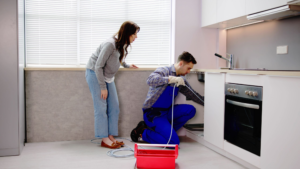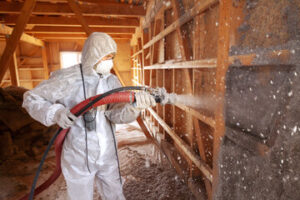A great Curly Hair Salon NYC should be a place where you feel beautiful, fresh and heard. It should also be a place where you can get your hair done in a way that suits your personality and your lifestyle. The stylists should be trained to listen to you and understand your needs, goals and aspirations.

They should also be able to offer advice and suggestions about how best to achieve your goals. The stylists should be able to answer any questions you have about how to care for your hair and maintain it at home.
Many people with curly hair have had terrible experiences at hair salons, either because their stylists weren’t skilled in working with curls or because they simply didn’t want to deal with the challenges that come with working with curly hair. Some even have to drive several hours to find a stylist who can work with their hair type. If you have curly hair, finding a specialist is well worth the effort.
The first step in finding a curl specialist is to search for one within your area. Many people have discovered the right specialist through word of mouth, but you can also check online. There are many forums and websites dedicated to locating specialists in specific cities or states. Often, these sites have detailed information about the services they provide and will list client reviews and photos. Some of these sites allow you to search by hair style, location or name.
Another way to find a curl specialist is to look for one in a beauty salon or barber shop. These are typically located in urban areas and may be franchises or they may be independently owned. Some independent salons offer booth rentals for hairstylists, cosmetologists, nail technicians and estheticians to run their own independent businesses.
In addition to offering various hair and spa treatments, these businesses typically carry a variety of hair products and cosmetics for sale. Some even sell a line of their own branded products. A few of these salons also offer nail and skincare services. Some of these salons require appointments, while others are walk-in only.
Bringing Your Hair Styled
The difference between hair salons and beauty salons is that hair salons specialize in hair services like haircuts, coloring, extensions, and styling, while beauty salons offer more comprehensive spa treatments including skincare and nail care. They also offer a wider range of retail products, such as shampoos, conditioners, and hair accessories. In addition, hair salons often host educational events on hairstyle techniques or new product launches, while beauty salons may host makeup workshops or skincare seminars.
Some hairdressers work for large salon chains, while others have their own private businesses. They can lease chair space from a salon owner or open their own shop after gaining experience and acquiring the proper licenses and certifications. They must have a variety of skills, such as excellent customer service and attention to detail. They must also keep up with the latest trends in hair fashion and technology, as well as follow health and safety guidelines for working with chemicals and using specialized tools and equipment.
A hairstylist’s job is to analyze a client’s hair and discuss stylistic options, including color and hair extension alternatives. Then they will use their tools to create a beautiful and unique look. A stylist may recommend haircare products, such as shampoos and conditioners, styling products, and treatments to help a client maintain their new look between appointments. They also stay informed about the latest trends in hairstyling and attend hair salon shows or conferences.
Some hairdressers and stylists require special training to become certified in specific hair techniques. They must follow strict hygiene standards and be familiar with haircare equipment, such as dryers, blow-dryers, and flat irons. They must also be skilled at cutting and coloring hair, as well as sculpting and shaping it to enhance its natural shape. Some stylists specialize in certain styles, such as curly or wavy hair. Other stylists have a more broad scope of expertise and can work on all types of hair. Many salons offer a range of styling options, such as a keratin treatment or Fusio Dose Densifique, that restores and adds texture to fine hair.
Choosing a Stylist
It’s important to find a stylist who has experience in your desired look. Doing your research ahead of time will help you narrow down the salon options that align with your vision and needs. Check online reviews to get a sense of the salon’s service quality, atmosphere, and stylist expertise. Some stylists also have portfolios on social media that give you a look at their skills and the types of hair they work with.
Finding the right hair stylist isn’t just about technical skill; it’s also about building a relationship that’s based on mutual respect. A strong stylist-client partnership can elevate the entire salon experience. A good stylist will listen to your ideas and offer suggestions, but it’s up to you to communicate how you want to be styled.
When you meet with a potential stylist, it’s helpful to bring reference photos of cuts or styles that you like. This will help you clearly convey your vision to the stylist and avoid any misunderstandings. It’s also a good idea to arrive with clean hair, as this ensures even color application and the best possible results.
It’s not uncommon to be nervous about trying a new salon or stylist. But with adequate preparation and effective communication, you’ll be surprised at how quickly you feel at ease in a new chair.
Remember that a stylist’s business depends on their clients’ satisfaction. If you’re not happy with your haircut, you may not return or refer friends. Be honest about your expectations and be willing to try a few different approaches until you find the one that’s just right for you.
Getting a Cut
When you’re ready to get a haircut, consult with the stylist beforehand about what you want. Be specific and use your hands to show where you want the cut to fall. This will ensure that you and your stylist are on the same page, and that you end up with a look that you love. You can also brush up on styling terms, such as “layers,” to ensure that you and your stylist are using the same language.
After the consultation, the stylist will proceed to cut your hair. They’ll take their time and be meticulous, ensuring that each snip fits your desired style. When they’re done, they’ll blow-dry and style your hair to show you how it looks and to help you maintain the new look at home. They may also provide tips on products, tools, and techniques that you can use to get the best results at home.
Depending on the salon, they may have a range of different retail products available for purchase. This could include hair products, styling tools, and accessories, or it could be skincare products, makeup, and nail polishes. Some salons even host collaborations with other beauty or fashion professionals, such as hairstylists, barbers, or makeup artists.
Some salons require a waiver or consent form before allowing clients to receive certain chemical treatments, like hair dyes or hair bleaches. These forms typically ask for an emergency contact in case of a bad reaction. Some salons may also perform a test strand on a part of your hair to see how it will respond to the product before applying it to the entire head.
Keeping your hair styled and well-maintained isn’t just about looks; it also promotes healthy hair. For this reason, experts recommend getting regular trims to prevent split ends and breakage. Additionally, it’s important to wash your hair regularly, but only with quality shampoos and conditioners that are designed for your hair type. Lastly, it’s recommended to avoid heat-styling your hair too often as this can cause damage. Choosing the right hair salon can make all the difference in your hair’s health and appearance.





